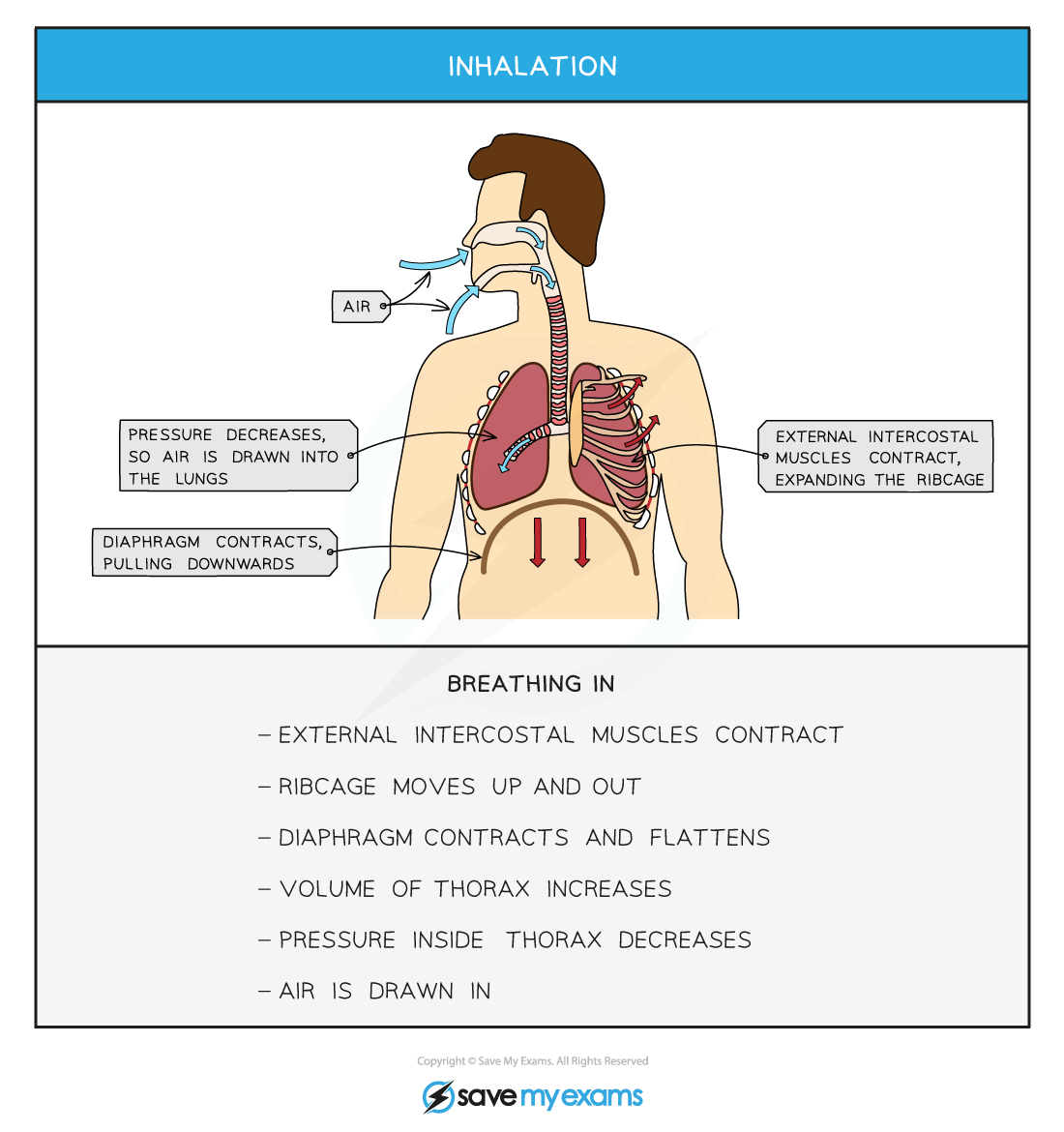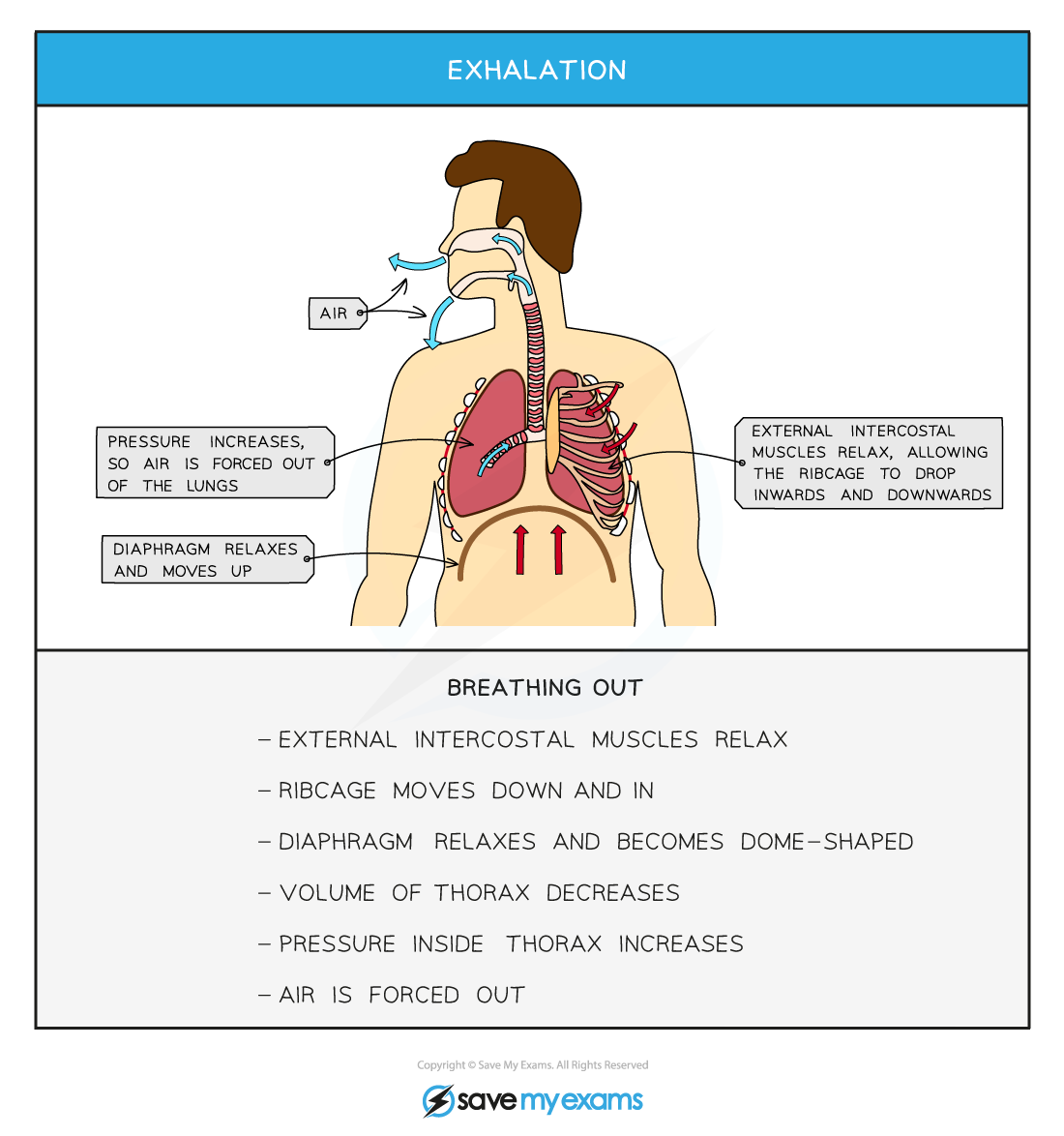Inspiration & Expiration
Breathing in
- The breathing-in, or inspiration, process causes the volume of the chest to increase and the air pressure to decrease until it is lower than the atmospheric pressure
- When gas is in a large-volume container that allows the gas particles to spread out, the pressure exerted by the gas on the walls of the container is low
- As a result, air moves down the pressure gradient and rushes into the lungs
- A gas will always move down a pressure gradient from an area of high pressure to an area of low pressure
- The inspiration process
- The diaphragm contracts and flattens, increasing chest volume
- In addition to the flattening of the diaphragm the external intercostal muscles contract, causing the ribcage to move upwards and outwards; this also increases chest volume

The process of inspiration
Breathing out
- Breathing out, or expiration, occurs mostly due to the recoil of the lungs after they have been stretched by the inspiration process, and is therefore a mainly passive process
- Volume of the chest decreases and pressure increases, causing air to be forced out down its pressure gradient
- When gas is in a low-volume container it is compressed, causing the gas particles to exert more pressure on the walls of the container
- The passive expiration process
- External intercostal muscles relax, allowing the ribcage to move down and in
- Diaphragm relaxes and becomes dome-shaped
- The recoil of elastic fibres in the alveoli walls reduces the volume of the lungs
- The expiration process can be active when there is a need to expel excess air from the lungs e.g. when blowing out a candle
- The active expiration process
- Internal intercostal muscles contract to pull the ribs down and in
- Abdominal muscles contract to push organs upwards against the diaphragm, decreasing the volume of the chest cavity
- This causes forced exhalation

The process of passive expiration
Antagonistic Muscle Action
- Muscles only carry out the work of moving the body when they are contracting, or pulling; they cannot push
- As a result of this limitation muscles often operate in pairs when movement in two directions in required
- One muscle of the pair pulls in one direction and the other muscle pulls in the opposite direction
- This is described as antagonistic muscle action
- Examples of antagonistic muscle action in ventilation are
- Internal and external intercostal muscles
- When the internal intercostal muscles contract, the rib cage moves down and in
- When the external intercostal muscles contract, the rib cage moves up and out
- The diaphragm and abdominal muscles
- When the diaphragm contracts, it flattens and moves downwards
- When the abdominal muscles contract, the internal organs of the abdomen are compressed and pushed upwards, exerting upward pressure on the diaphragm
- Internal and external intercostal muscles
Exam Tip
The intercostal muscles work in an antagonistic manner; as one contracts the other relaxes!Note that the internal intercostal muscles only contract to cause forced expiration; expiration is passive the majority of the timeRemember, if you learn one of either inspiration or expiration, the other is almost exactly the opposite.
